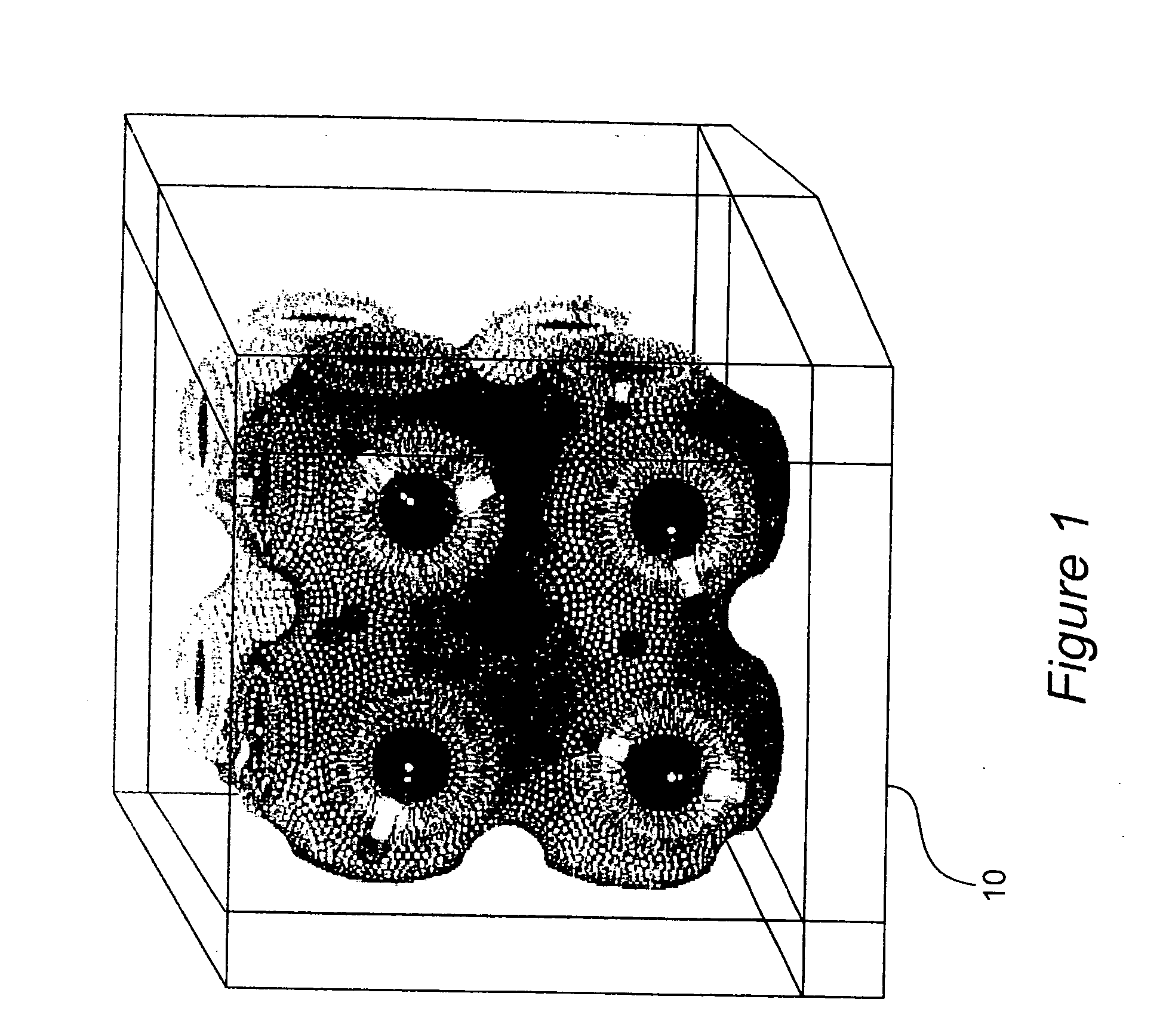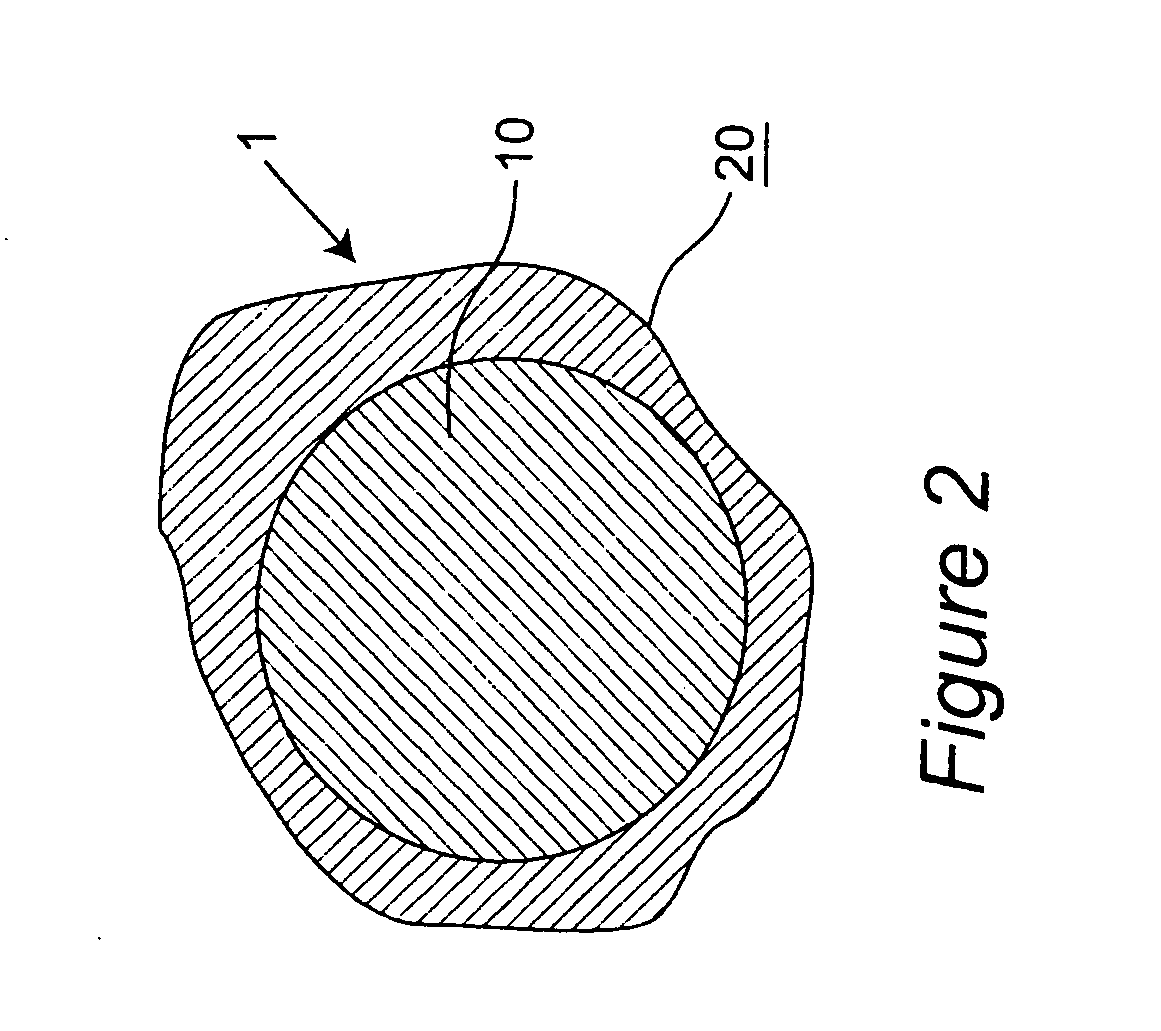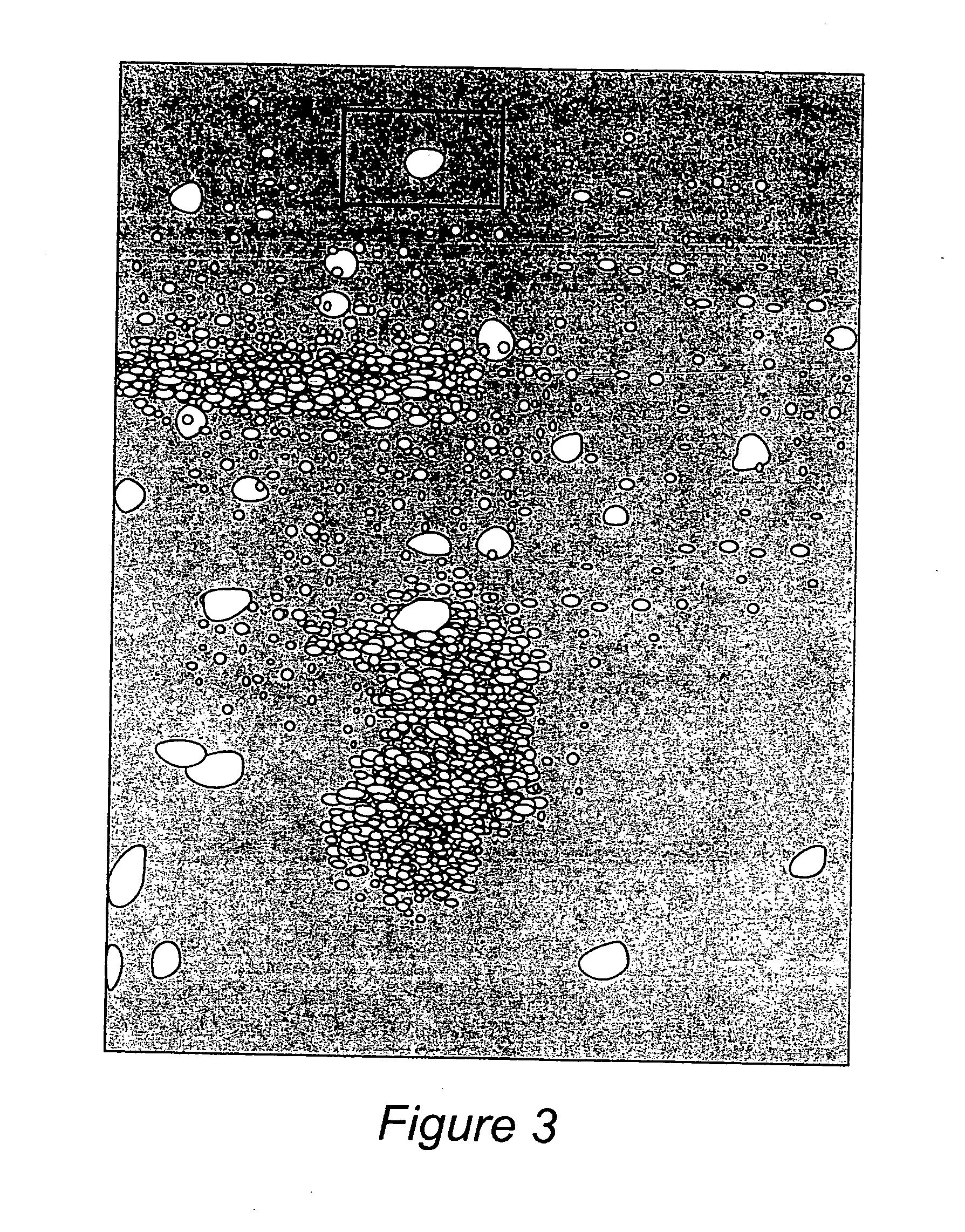Coated particles, methods of making and using
a technology of coating particles and coating powders, applied in the direction of powder delivery, peptide/protein ingredients, macromolecular non-active ingredients, etc., can solve the problems of high molecular weight of polymers, reducing the diffusion coefficient and solubilization kinetics of polymers, and limited number of suitable polymers
- Summary
- Abstract
- Description
- Claims
- Application Information
AI Technical Summary
Benefits of technology
Problems solved by technology
Method used
Image
Examples
example 1
[0414] This Example shows that a wide range of active compounds, including compounds of importance in pharmaceutics and biotechnology, can be incorporated into nonlamellar material-coated particles of the present invention.
[0415] An amount of 0.266 grains, of sodium hydroxide was dissolved in 20 ml of glycerol using heating and stirring to aid in dissolution. An equimolar amount, namely 1.01 grams, of methyl paraben was then dissolved, again with heating. From this solution, 0.616 grams were taken out and mixed with 0.436 grams of lecithin and 0.173 grams of oleyl alcohol in a test tube. The active ingredient (or agent) identified below was incorporated at this point and the solution thoroughly mixed to form a nanostructured liquid crystalline phase material with an active ingredient disposed within it. An “upper solution”, which was obtained by dissolving 0.062 grams of Pluronic F-68 (a polvpropyleneoxide-polvethyleneoxide block copolymer surfactant commercially available from BAS...
example 2
[0423] This example demonstrates the long-term stability of a dispersion of particles of the present invention.
[0424] The amino acid D,L-leucine, in the amount of 0.132 grams, was dissolved in 2.514 grams of 1 M hydrochloric acid, resulting in the formation of leucine hydrochloride in solution. The solution was dried on a hot plate under flow of air, but was not allowed to dry to complete dryness: drying was stopped when the weight reached 0.1666 gram, which corresponds to one molar equivalent addition of HCl to the leucine. An amount of 0.130 grams of this compound were added to 0.879 grams of a nanostructured reverse bicontinuous cubic phase material prepared by mixing sunflower oil monoglycerides and water, centrifuging, and removing the excess water. An upper solution was prepared by mixing 1.0 grams of 1 M sodium hydroxide with 3 grams of water. All water used was triply-distilled. The upper solution was overlaid on the cubic phase, the test tube sealed and sonicated, resultin...
example 3
[0429] In this example paclitaxel was incorporated at the level of 0.5% of the internal core. The particle coating was leucine, which in other examples herein has been shown to provide longterm stability.
[0430] A paclitaxel-containing nanostructured reverse bicontintuous cubic phase material was produced by mixing 4 mg of paclitaxel, dissolved in 2 ml t-butanol, in a nanostructured reverse bicontinuous cubic phase material containing 0.280 gm lecithin, 0.091 gm of oleyl alcohol, and 0.390 am glycerol: after evaporation of the butalnol under argoni, a nanostructured reverse bicontinuous cubic phase material formed that was viscous and optically isotropic. The sample was centrifuged for one hour, during which time no precipitate appeared. Optical isotropy was verified in a polarizinig optical microscope. A leucine hydrochloride solution in glycerol was produced by mixing 0.241 grams of leucine, 2.573 grams of 1 M HCl, and 0.970 grams of glycerol, after which the water and excess HCl ...
PUM
| Property | Measurement | Unit |
|---|---|---|
| mean caliper diameter | aaaaa | aaaaa |
| mean caliper diameter | aaaaa | aaaaa |
| adsorption capacity | aaaaa | aaaaa |
Abstract
Description
Claims
Application Information
 Login to View More
Login to View More - R&D
- Intellectual Property
- Life Sciences
- Materials
- Tech Scout
- Unparalleled Data Quality
- Higher Quality Content
- 60% Fewer Hallucinations
Browse by: Latest US Patents, China's latest patents, Technical Efficacy Thesaurus, Application Domain, Technology Topic, Popular Technical Reports.
© 2025 PatSnap. All rights reserved.Legal|Privacy policy|Modern Slavery Act Transparency Statement|Sitemap|About US| Contact US: help@patsnap.com



